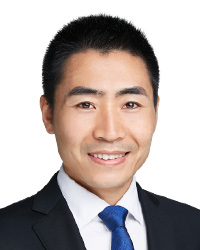For a long time, it has been difficult to protect rights in trade secrets. But the burden of proof for rights holders is reduced with the addition of article 32 to the Anti-Unfair Competition Law 2019. This article examines how article 32 effectively reduces difficulties in protecting rights.
Q: How has the burden of proof changed for rights holders with the introduction of article 32?

Partner
AnJie Broad Law Firm
A: Before the introduction of article 32, the rights holder shouldered a burden of proof that their trade secret met three statutory elements – secrecy, valuableness and confidentiality – and the defendant’s information was the same, or substantially the same, as its trade secret, which the defendant adopted by improper means.
Article 32 now stipulates two aspects of “preliminary proof” for the elements of trade secrets and determination of infringement, and once “preliminary proof” is completed, the burden of proof can be shifted.
For the elements of trade secrets, the rights holder needs to first prove it has taken confidentiality measures on the trade secret claimed, and reasonably show the trade secret has been infringed. At this point, the burden of proof will be transferred to the defendant, who must prove the trade secret claimed by the rights holder does not belong to those specified by the law.
For determination of infringement, the process is the same. After providing preliminary proof and shifting the burden of proof, the rights holder’s burden of proof is greatly reduced.
Q: What is common “preliminary evidence”?
A: Under article 32(2) of the Anti-Unfair Competition Law, the rights holder must prove the defendant “had access to its trade secrets”, and “substantial similarity” between the trade secrets, or that “trade secrets have been disclosed, used, or are at risk of being disclosed or used”.
How is it possible to prove the defendant had access to a rights holder’s trade secrets? In practice, evidence is often adduced to prove existence of a former employment relationship between the parties, and the defendant’s involvement in the relevant business, or access to relevant business information, or a co-operative relationship between the parties on the relevant business.
“Substantial similarity” can be proved by comparing the trade secret and infringing product through an appraisal agency, establishing it as identical or mostly identical.
For disclosure and use of trade secrets, if an employee who has left or is employed by a competitor transfers a trade secret to a carrier not under the control of the rights holder, such as a copy to a private email address, the trade secret may be deemed to be at risk of unlawful disclosure or use.
Q: Does article 32 effectively reduce the difficulty of rights holders to protect their rights?
A: An analysis of 298 civil judgments on trade secret infringement from 2019 to 2022, retrieved from the Wolters Kluwer database, shows the average win rate of rights holders is 39.41%. In 32 cases the parties explicitly invoked, or the court explicitly applied, article 32 and the rights holder won 15 of them, with a success rate of 46.875%, significantly higher than the average win rate of trade secret cases.
Q: What are typical cases of applying article 32?

Associate
AnJie Broad Law Firm
A: Application of article 32 is mainly reflected in two aspects – proof for the elements of trade secrets, and determination of infringement. In both aspects, the burden of proof of the rights holder is reduced.
For example, in Jinan Systester Testing Technology v Jinan Labthink Electromechanical Technology, the Supreme People’s Court held that in the civil case of infringement of trade secrets, the rights holder should first provide preliminary evidence to prove it has taken “corresponding confidentiality measures” to protect the trade secret, as well as the defendant’s infringement.
On that basis, the rights holder does not need to prove the trade secret meets the requirement of “not known to the public”. Rather, the infringer should prove the trade secret is unqualified under the Anti-Unfair Competition Law because it is publicly known.
Another example was in Zhejiang Huazhang Technology v Tang Zhichao and Jiaxing Green Ark Environmental Protection Technology, when the Intermediate People’s Court of Jiaxing city, Zhejiang province, found that Zhejiang Huazhang had provided evidence that Tang had channels and opportunities to obtain its business information, technical information and other relevant trade secrets during his employment, posing a risk of being disclosed or used because Tang and his spouse invested in and actually controlled Green Ark, and its business overlapped with Huazhang’s in environmental protection research and development.
Moreover, the two companies signed supply contracts with the same customer for associated equipment in the same project at the same time.
That was the preliminary evidence Zhejiang Huazhang adduced to prove its trade secrets were infringed, and Tang and Green Ark were required to prove that the alleged infringement did not exist. However, they failed to provide relevant evidence, and the court eventually ruled that Tang and Green Ark both constituted infringement of Zhejiang Huazhang’s trade secrets.
Q: What is the advice for rights holders to file a lawsuit on infringement of trade secrets?
A: The rights holder can fully use article 32 to reduce the difficulty of proof. But application of it requires the rights holder to provide two aspects of “preliminary evidence” to shift the burden of proof.
Therefore, when filing a lawsuit on infringement of trade secrets, the rights holder must collect evidence according to the elements of trade secrets as substantially as possible to complete the preliminary burden of proof.
Chen Zhixing is a partner and Lan Manfeng is an associate at AnJie Broad Law Firm

AnJie Broad Law Firm
19/F Tower D1, Liangmaqiao Diplomatic Office Building
19 Dongfang East Road
Chaoyang District
Beijing 100600, China
Tel: +86 10 8567 5988
Fax: +86 10 8567 5999
E-mail: chenzhixing@anjielaw.com
lanmanfeng@anjielaw.com





















